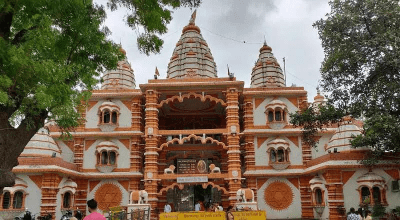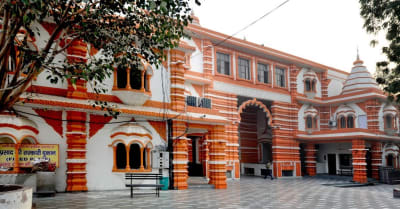The Story Behind Sheetla Mata Mandir

In many parts of India, especially in the north, many goddesses are worshipped and Sheetala Mata as one of them holds a very special place in people’s hearts. Sheetal Mata mandir is not just a temple but a place that is known for extending protection from illness and praying for well-being.
Known as the goddess of healing, especially linked with protection against diseases like smallpox and other infections, Her worship goes back centuries. But who exactly is Sheetala Mata? And what is the story behind her temple? Let’s explore.
Who Is Sheetala Mata?

Considered as a form of Goddess Durga or Parvati, Sheetal Mata is worshipped for many reasons but mainly for protection from skin diseases and fevers. As mentioned, according to Sheetal Mata origin story, her worship goes back to the olden days when smallpox was a common and dangerous disease. During these tough times, people turned to her with prayers.
She is usually depicted riding a donkey while carrying a broom, a water pot, neem leaves, and sometimes a winnowing fan. Each of these symbols has a deep meaning. It is believed that she uses them to sweep away disease and cool down the fever of the sick.
The Historical Significance of Sheetala Mata Mandir

For anyone planning to visit , Temples dedicated to Sheetala Mata can be found in many parts of India, especially in Rajasthan, Haryana, Delhi, Uttar Pradesh, Bihar, and Madhya Pradesh. One of the most popular ones is in Gurugram and is believed to be centuries old.
The local belief is that this temple gained significance when diseases like smallpox and measles were common. People believed that praying to Sheetala Mata could prevent or cure these illnesses. Since medical treatment was limited in the past, faith in the goddess was strong and widespread.
Some temples are believed to have been built by kings or villagers who felt blessed after recovering from illness or after a divine dream.
Rituals and Beliefs

One of the most well-known days to worship Sheetala Mata is Sheetala Ashtami, which usually falls just after Holi. On this day, people eat cold food prepared the night before, known as basoda. They don’t light fires or cook on occasion.
According to the oral tales, It is believed that cooking or using fire can anger the goddess, while eating cold food shows respect to her. Cold puris, curd, jaggery, neem leaves, and sometimes sweet rice are the usual offerings that are made as Prasad.
Many devotees, especially the mothers, offer prayers to the goddess for the protection of their children from heat-related diseases and to bring overall good health to the family.
Why Do People Still Visit Today?

Many people still have great faith in Sheetala Mata and visit the temple frequently to pray for health and healing. Families with newborns, children, or elderly members often come to ask for her blessings.Even though today scientific treatments are a sunke for the diseases, people suffering from skin issues like eczema, chickenpox,etc pay a visit to her temple for their betterment.
One can see the temple filled with people offering prayers, food, and organizing community meals or cleanliness drives as acts of devotion, especially during the festivities. The belief in the healing abilities of Sheetal Mata has continued across generations, passed down from mothers to daughters and grandmothers to grandchildren.
CONCLUSION
The story of Sheetala Mata Mandir is deeply rooted in Indian culture and belief. From the origin story to the powerful mythology, everything about Sheetala Mata reflects people’s faith in her healing powers and protective nature. Her temple is not just a religious site—it’s a place of comfort for countless devotees who come with prayers for health and well-being.
Through traditional pujas, meaningful rituals, and annual festivals, the significance of Sheetala Mata worship continues to be passed down through generations. The legends, stories, and beliefs around her offer a glimpse into India’s rich spiritual life. Whether you're exploring her history, visiting a temple location, or simply learning about her cultural importance, Sheetala Mata’s tradition remains strong and inspiring.